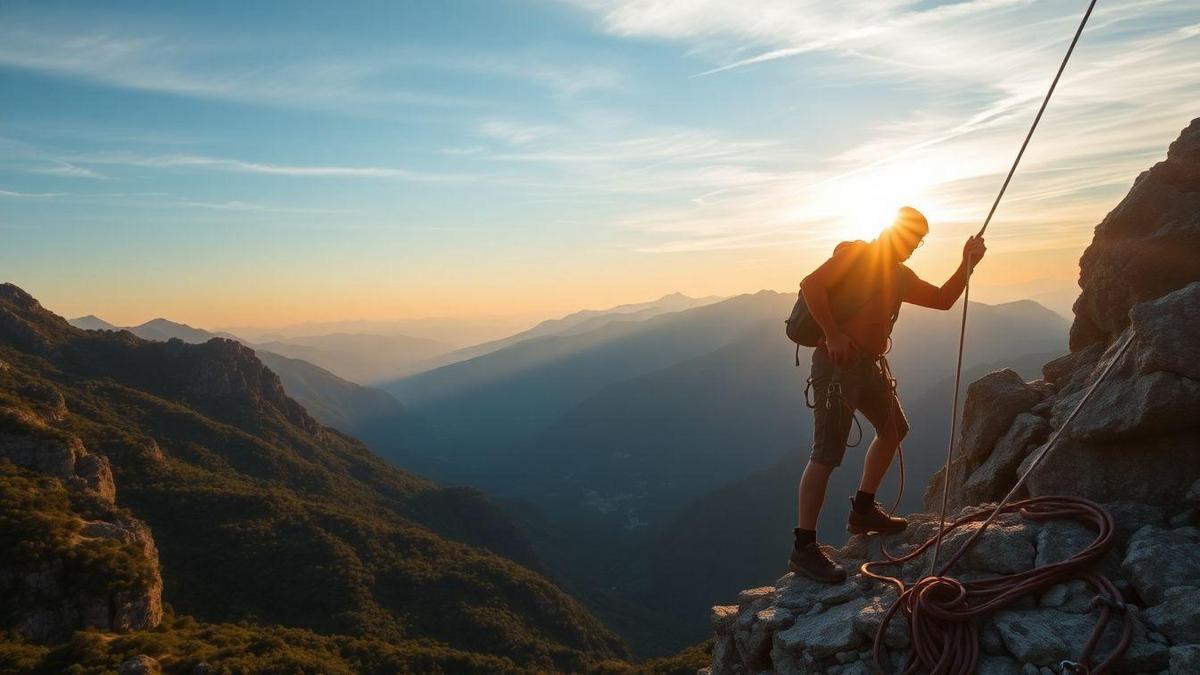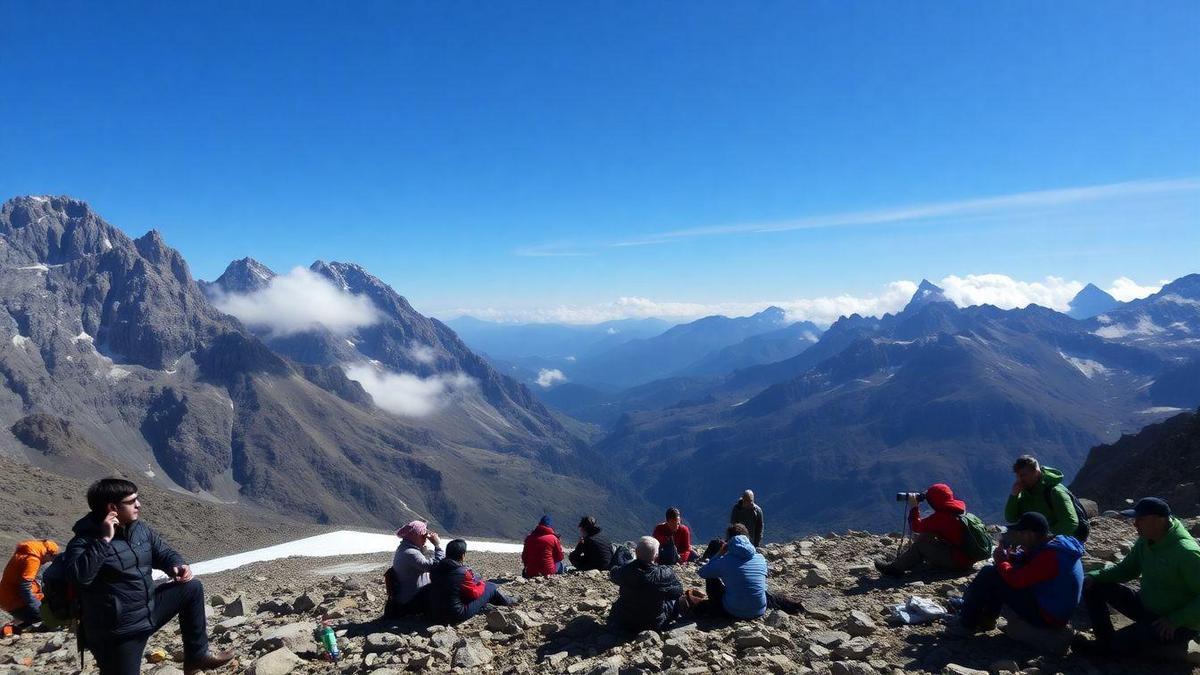
Importance of Endurance Training for Mountain Climbers
Why Endurance Matters in Climbing
When you think about climbing a mountain, endurance is one of the first things that comes to mind. Imagine standing at the base of a towering peak, ready to conquer it. You need to keep going, even when your legs feel like jelly and your lungs are burning. Endurance helps you push through those tough moments. It’s the difference between reaching the summit or turning back halfway.
How Endurance Training Boosts Your Performance
Endurance training prepares your body for the long haul. This training helps you build stamina, allowing you to climb higher and longer without feeling completely wiped out. Think of it as preparing for a marathon, but your marathon is scaling a mountain.
When you train your endurance, you also improve your heart health and lung capacity. This means you’ll have more energy and better oxygen flow while you climb, enabling you to tackle steep trails and rocky paths with greater ease.
Key Benefits of Training Routines for Endurance in Mountain Climbing Preparation
Here are some key benefits of endurance training routines that can help you prepare for your mountain climbing adventure:
| Benefit | Description |
|---|---|
| Increased Stamina | Helps you climb longer without fatigue. |
| Better Recovery | Reduces soreness and helps you bounce back faster. |
| Enhanced Mental Toughness | Builds your confidence to tackle tough climbs. |
| Improved Heart Health | Strengthens your heart and lungs for better oxygen flow. |
By following a training routine for endurance in mountain climbing preparation, you’ll not only feel stronger but also more confident in your abilities. It’s about pushing your limits and discovering just how much you can achieve.
Strength Training for Climbers: Building a Strong Base
Essential Strength Exercises for Mountain Climbers
When you think about climbing a mountain, you might picture breathtaking views and the thrill of reaching the top. But behind that adventure lies a foundation built on strength. To help you prepare, here are some essential exercises that can make a big difference:
- Squats: These work your legs and core, helping you build the power needed for each step.
- Push-ups: Great for your upper body, push-ups help you pull yourself up when climbing.
- Planks: This exercise strengthens your core, crucial for balance and stability.
- Lunges: They mimic the movement of climbing, helping your legs get stronger for steep paths.
How Strength Training Supports Endurance
You may wonder how strength training ties into your endurance. Think of it this way: strong muscles can work longer without getting tired. When you build strength, you’re preparing your body to handle the long haul.
Here’s how it works:
| Benefit | Explanation |
|---|---|
| Increased Muscle Power | Stronger muscles can push through fatigue longer. |
| Improved Stability | A strong core helps keep your balance on tricky terrain. |
| Better Recovery | Strong muscles recover faster after hard climbs. |
Incorporating Strength Training into Your Climbing Routine
Now, you might be thinking about how to fit strength training into your busy life. It’s easier than you think! Here are some simple tips to help you get started:
- Set a Schedule: Aim for at least two days a week for strength training. Treat it like an important meeting.
- Mix It Up: Combine strength exercises with your climbing practice. For example, do squats before heading out for a climb.
- Listen to Your Body: If you feel tired, it’s okay to take a break. Recovery is just as important as training.
Aerobic Conditioning: The Heart of Climbing Endurance
Understanding Aerobic Conditioning for Climbers
When you think about climbing a mountain, aerobic conditioning is your best friend. It’s all about how well your body uses oxygen during long activities. The better your aerobic fitness, the longer you can climb without feeling tired. Imagine running a marathon or cycling for hours. That’s similar to what climbing can feel like.
Effective Aerobic Workouts for Mountain Preparation
To prepare for your climb, you need to do some aerobic workouts. Here are some effective options:
| Workout Type | Duration | Frequency |
|---|---|---|
| Jogging | 30-60 minutes | 3-4 times a week |
| Cycling | 45-90 minutes | 2-3 times a week |
| Swimming | 30-60 minutes | 2-3 times a week |
| Hiking | 3-5 hours | 1-2 times a week |
These workouts will help build your stamina. You’ll feel stronger and more ready for those steep trails.
The Role of Aerobic Conditioning in Your Climbing Success
Aerobic conditioning plays a big part in your climbing success. When you climb, your heart and lungs work hard to deliver oxygen to your muscles. If you train your body well, you can climb longer and with less fatigue.
Think about it: when you’re on a steep path, you want to keep moving without gasping for air. With good aerobic fitness, you can maintain a steady pace. You’ll be able to enjoy the view instead of worrying about catching your breath.
In the end, training routines for endurance in mountain climbing preparation can make all the difference. Start today, and your future self will thank you when you reach that summit!
Interval Training: A Powerful Tool for Endurance
What is Interval Training and How It Helps You
Interval training is a workout method that alternates between high-intensity bursts and low-intensity recovery periods. It’s like a dance between pushing your limits and giving your body a breather. This training can be a game-changer when preparing for mountain climbing. By mixing intense efforts with rest, you build endurance and improve your overall fitness.
When you push hard for a short time, your heart rate increases, and your body learns to handle stress better. This means that when you’re on a steep trail, your body will be ready to tackle the challenge. Plus, it can help you burn calories faster, making it easier to maintain a healthy weight for climbing.
Sample Interval Training Workouts for Climbers
Here are some simple interval workouts you can try. You don’t need fancy equipment; just grab a timer and get moving!
| Workout | Duration | Intensity |
|---|---|---|
| Sprinting | 30 seconds | All-out sprint |
| Walking/Rest | 1 minute | Slow walk or stand |
| Hill Sprints | 20 seconds | Sprint uphill |
| Recovery Walk | 1 minute | Gentle walk |
| Jump Rope | 1 minute | Fast pace |
| Rest | 1 minute | Stand still |
Feel free to mix and match these exercises. The key is to challenge yourself during the high-intensity parts and allow your body to recover during the rest periods.
Maximizing Your Endurance with Interval Training
To really boost your endurance, follow a few tips. First, stay consistent. Aim for at least three interval training sessions a week. Second, listen to your body. If you’re feeling tired, it’s okay to take a break or adjust your workout. Lastly, make sure to hydrate and fuel your body with healthy foods. Proper nutrition is just as important as your workouts.
By incorporating interval training into your routine, you’ll be well on your way to building the endurance needed for mountain climbing. You’ll find that tackling those steep trails becomes easier, and you’ll feel more confident in your abilities.
Core Strength: The Foundation of Climbing Endurance
Why Core Strength is Crucial for Climbers
When you think about climbing, you might picture the muscles in your arms and legs doing all the heavy lifting. But core strength is just as important! Your core includes all the muscles in your abdomen, back, and pelvis. A strong core helps you maintain balance and stability while you climb. It also supports your movements and can help prevent injuries.
Imagine trying to climb a steep mountain without a solid base. It would be like building a house on sand! Without core strength, your body may struggle to hold on, and you could tire out quickly. Focusing on your core can make a huge difference in your climbing performance.
Core Exercises to Enhance Your Climbing Performance
To build core strength, try a few simple exercises. Here are some effective ones:
| Exercise | Description |
|---|---|
| Plank | Hold your body straight like a board for 30 seconds. |
| Russian Twists | Sit on the ground and twist your torso side to side. |
| Leg Raises | Lie on your back and lift your legs straight up. |
| Bicycle Crunches | Lie on your back and pedal your legs while crunching. |
These exercises can easily be added to your training routines for endurance in mountain climbing preparation. They not only strengthen your core but also improve your overall fitness.
Building Core Strength for Better Mountain Ascent
To climb mountains with ease, you need to build your core strength gradually. Start with a few repetitions of each exercise and increase them as you get stronger. Consistency is key! Try to include core workouts in your routine at least three times a week.
You might feel some soreness at first, but that’s just your body getting used to the new challenges. As you keep pushing through, you’ll notice that your climbs become smoother and more enjoyable. You’ll feel more confident and ready to tackle those steep trails.
Hiking Endurance Prep: Getting Ready for the Trail
How Hiking Builds Your Climbing Endurance
Hiking is one of the best ways to boost your endurance for mountain climbing. When you hike, you’re not just walking; you’re building strength in your legs and improving your cardiovascular health. Each step you take on the trail prepares your body for tougher climbs ahead.
As you hike, you face different terrains. This variety challenges your muscles and helps you adapt. Think of it as a workout for your body. The more you hike, the better you’ll feel when you start climbing. Your body will learn to handle longer distances and steeper slopes.
Tips for Incorporating Hiking into Your Training
To make the most of your hiking, here are some tips:
- Start Slow: If you’re new to hiking, begin with shorter trails. Gradually increase the distance as you become more comfortable.
- Choose Varied Trails: Look for hikes that offer different types of terrain. This will help your body adapt to various challenges.
- Set Goals: Aim for a certain number of hikes each month. Setting goals keeps you motivated and helps you track your progress.
- Hike with Friends: Find a buddy to hike with. It makes the experience more enjoyable and keeps you accountable.
Creating a Hiking Endurance Plan for Mountain Climbing
To create a solid hiking endurance plan, consider the following steps:
| Step | Action |
|---|---|
| 1. Assess Your Level | Know your current fitness level. |
| 2. Set a Schedule | Plan hikes for at least 2-3 times a week. |
| 3. Mix It Up | Include different trails and terrains. |
| 4. Track Your Progress | Keep a journal of your hikes. |
| 5. Include Rest Days | Allow your body to recover. |
With this plan, you’ll build the endurance you need for mountain climbing. Remember, every hike counts. Each step brings you closer to your goal.
Frequently Asked Questions
What are some effective training routines for endurance in mountain climbing preparation?
You can focus on cardio workouts like running, biking, or swimming.
Strength training is also key, especially for your legs and core.
Mix it up with climbing drills too!
How often should I train for endurance in mountain climbing?
Aim for at least 3 to 4 times a week.
This will build your stamina and help your body adapt.
Listen to your body to avoid burnout!
What specific exercises can boost my endurance for mountain climbing?
Try squats, lunges, and step-ups.
These target your leg muscles.
Don’t forget to include planks for core strength!
How long should each training session be?
Start with 30 to 60 minutes.
As you build endurance, increase this to 90 minutes or more.
Keep it fun, and switch activities often!
When should I start my training for a mountain climbing trip?
Begin at least 8 to 12 weeks before your trip.
This gives your body time to adapt.
It’s better to start early than to rush!


